
04-01-2022 - Case Study, Gear, Technology
Shot on VENICE: DP Simon Chapman, ACS Shoots “Space Force” for Netflix
By: Jeff Berlin
Space Force is a comedy series about a group of people who are working to establish the United States Space Force. It stars Steve Carell and John Malkovich. SonyCine.com caught up with director of photography Simon Chapman, ACS to discuss his work on the show and his transition from working in Australia and the U.K. to working in Vancouver shooting Space Force on VENICE.
Simon Chapman: I was shooting in Australia, moving up the ladder, doing a bit of feature work, commercial work, and then got into the television space around 2012. We left Sydney and came to Vancouver in 2016.
I worked several jobs here as an operator while still going back to Australia and shooting as DP there and in England, shows like Dr. Who and Gentleman Jack for HBO. And then, I got a gig, shooting a comedy called Upload here in Vancouver and that led to Space Force.
Jeff Berlin: Being a DP is creative, but there’s a technical aspect to it as well. What’s your philosophy on that balance, creative and technical?
SC: My instinct is to think, how does it look, rather than what lens were you on? What's the feeling that you're trying to create, and then working backwards from there to discover what the technical will be to create that look. I've always had an interest in the technical side of things, but it's never been a driving force. I’ve always been driven by script and story, and having a genuine love of movies, and then figuring out, "Oh, how did they get that look? How did they create that? Why did that look different? Oh, that's anamorphic. Oh, I see." And then you go down the rabbit hole from the image backwards.
With digital technology becoming so prevalent, you have to keep on top of technology so you can have those conversations. And I'm sure we all watch shows on TV and think, "I wonder what they shot that on, because that looks really nice." And then you discover what cameras they've used and things like that. But, ultimately, starting from the image, and the aesthetic, that drives everything. And then thinking, "Okay, how can we achieve that technically?" That's how I've always gone into my work.
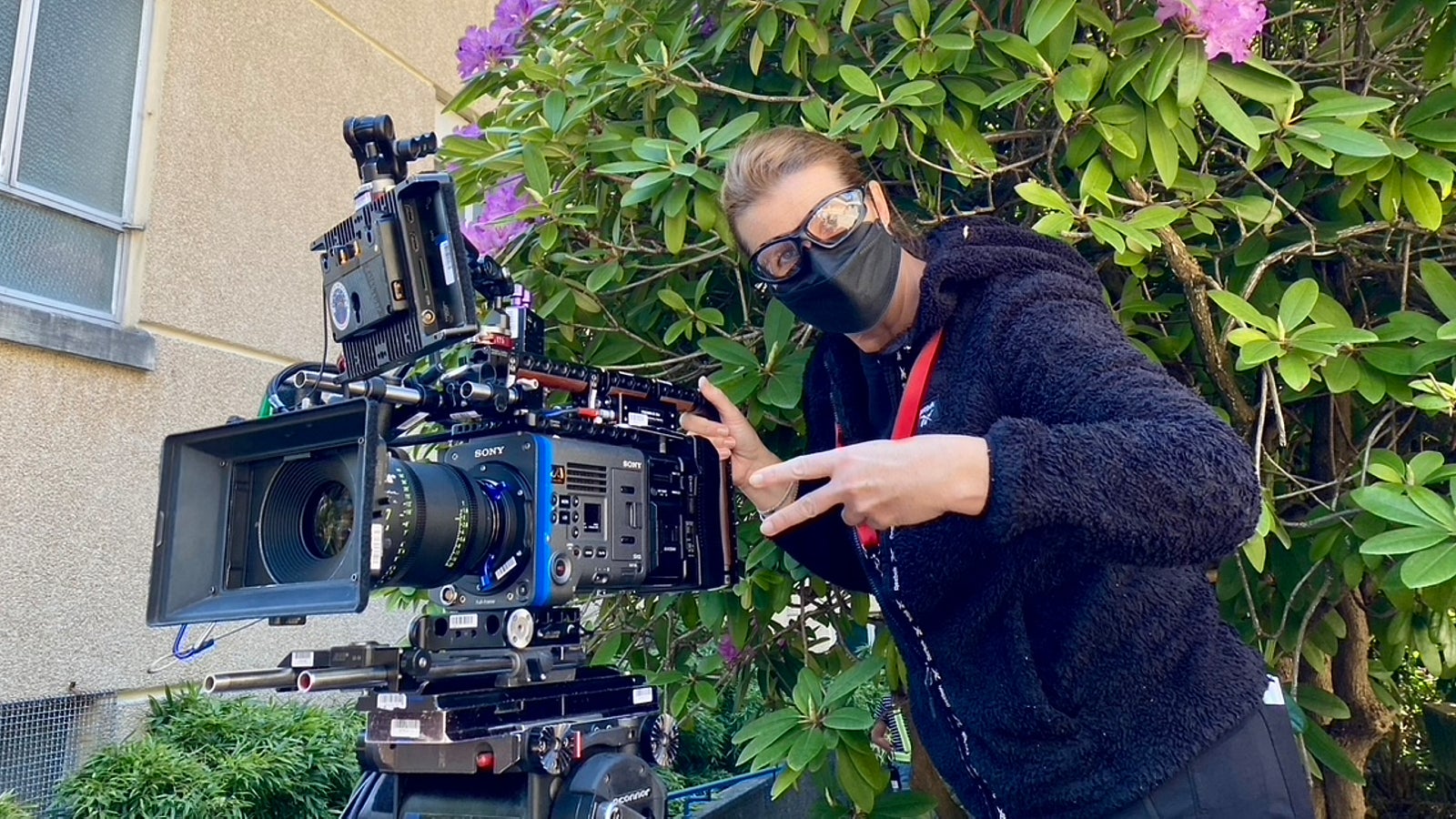
Jessica Moska, B camera operator
JB: How did you land on VENICE for Space Force? Had you used it before on any other projects?
SC: I had not used the VENICE as a DP. I had used it as an operator. And I'd heard a lot of stories about it as it became more popular. You would hear the discussions around sets, around cameras on other jobs, and other DPs talking about it. I have a wide circle of friends who are DPs and the name just started popping up in conversations a lot. So, I was curious. I shot season one on the ARRI LF, but when it came to season two of Space Force, I had this gut feeling that I wanted to make the switch for a few reasons. The budget had been slashed for season two. I was concerned about light levels. I was concerned about a few other things. So, the VENICE kept coming back into my mind with the dual base ISO being a big factor, the 2,500 base and the 500 base. And I thought, "Well, look, if I'm really struggling, I know I've got some extra support there."
And the internal NDs were also a huge factor, even though we didn't end up shooting a lot of exterior, it was one of those things I loved, from the experience that I'd had with the camera. I'd loved how quick it was to switch NDs internally and how the color matching was so good. Eliminating external NDs was great, and working on fast schedules, that was another factor. So, there were a few things like that steering me towards VENICE. I'm glad I took the leap.
I really loved what I was seeing in terms of the color and depth, and when I looked at some tests at 2500 ISO base on 4K monitors at Company 3, I really loved the noise, the level. It was quite pleasant, still. So, I was quite confident going into it, , I felt like it wasn't going to be such a dramatic shift, because I still had the series one show LUT converted for the VENICE, and then we made a few adjustments with our CDLs and our final grade to find the look that I liked. And yeah, it is just a very user-friendly camera.
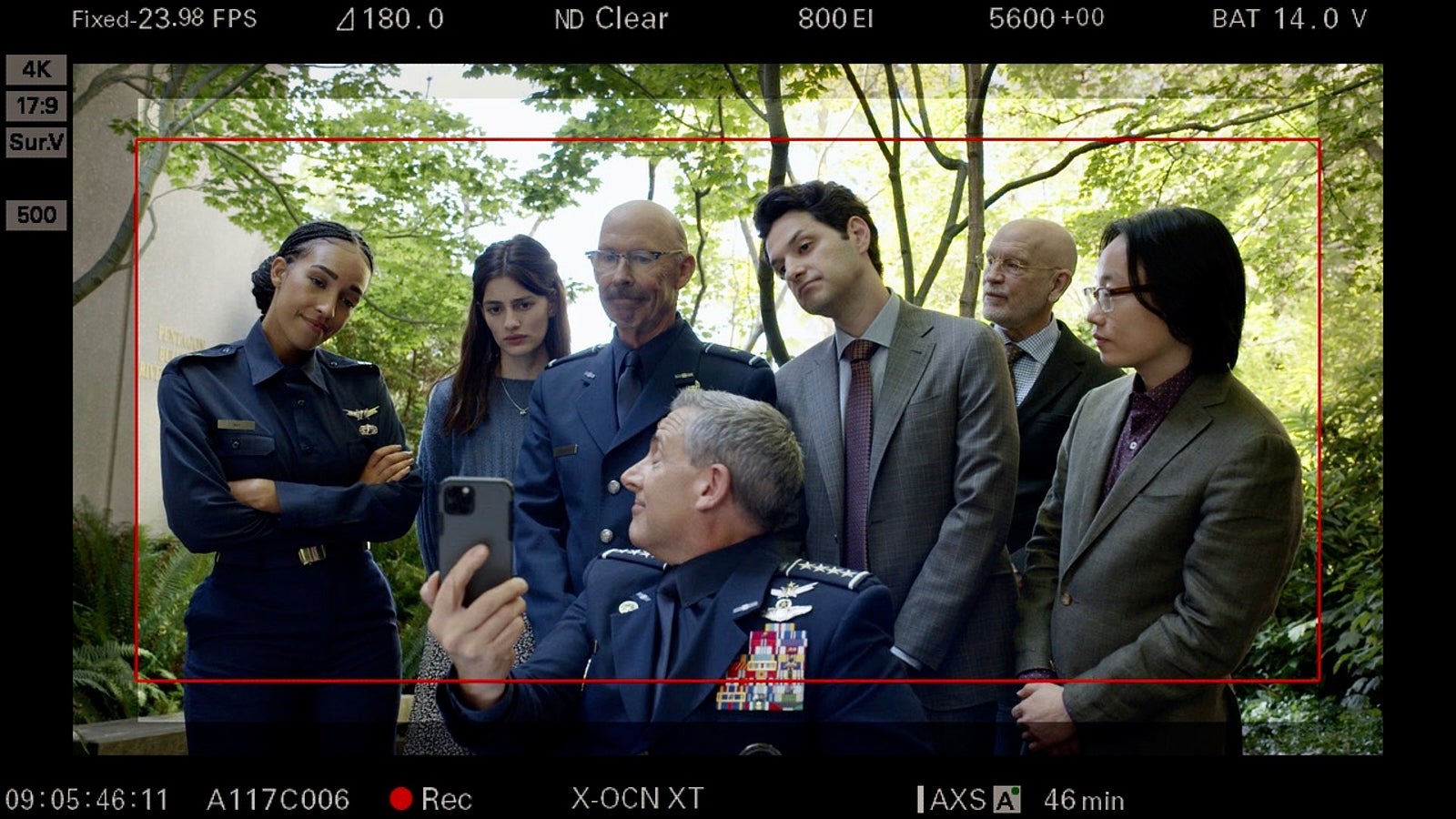
JB: How did you use sensor mode to work with depth of field? And did you have any favorite focal lengths?
SC: This is another reason that I chose VENICE for this project. I struggled on season one where we shot the ARRI LF because it's comedy and there's a lot of group shots. This year, they really pushed that more, and I was a little concerned about depth of field because of the large format, holding group shots in focus was quite difficult at times. And what I liked about the Sony is I switched every day between 4K (Super 35) and 5.7K (full frame). I was constantly using the depth of field inherent to the sensor size to create more focus or less focus. If I wanted to isolate characters, I would use 5.7K large format, and if I wanted to hold more focus or if I was struggling for a deeper depth on group shots, I would switch to 4K. And so the lenses, obviously the focal length effectively changes. So between the operator, the focus puller and I, we got quite good at predicting whether this was a 6K shot, or 5.7K, 17:9 to be precise or a 4K shot. We would just be switching formats throughout the day.
JB: So, you would go from full frame, 5.7K, 17:9 to 4K, 17:9, Super 35.
SC: Yes, exactly. And after doing some research, it sounded like it was going to be easy, to make these adjustments. A switch of a couple of buttons in the menu and we could instantly go from 4K to 6K. So, that became one of the tools of our language. We stayed on the primes and then we'd have a discussion about focal length when we were setting up shots. "Do we want this to be a 6K shot or a 4K shot?" And it was great.

JB: Did you do any specific camera and lens tests? And what lenses did you decide to pair with the camera?
SC: It was a quick prep for me. I didn't have time to do a lot of testing so I relied on lenses I knew, ARRI Signature Primes. I wanted a consistent set of lenses, with a sharpness that wasn't overbearingly sharp. We did only a couple of tests since I was more interested in seeing that 2500 ISO noise level, knowing that I could shoot with that [ISO level] with confidence.
I'd heard anecdotally from cinematographers around the world who have been using VENICE, and they were saying to me, "Look, you won't have any problems at 2500.” And to be honest, I really liked the texture that gave the image. And Space Force is a fairly simple interior workplace comedy. I didn't really have to push the format too much. I'm really looking forward to the next project where I can utilize the camera across a much more diverse range of situations, whether it's desert, night, et cetera.
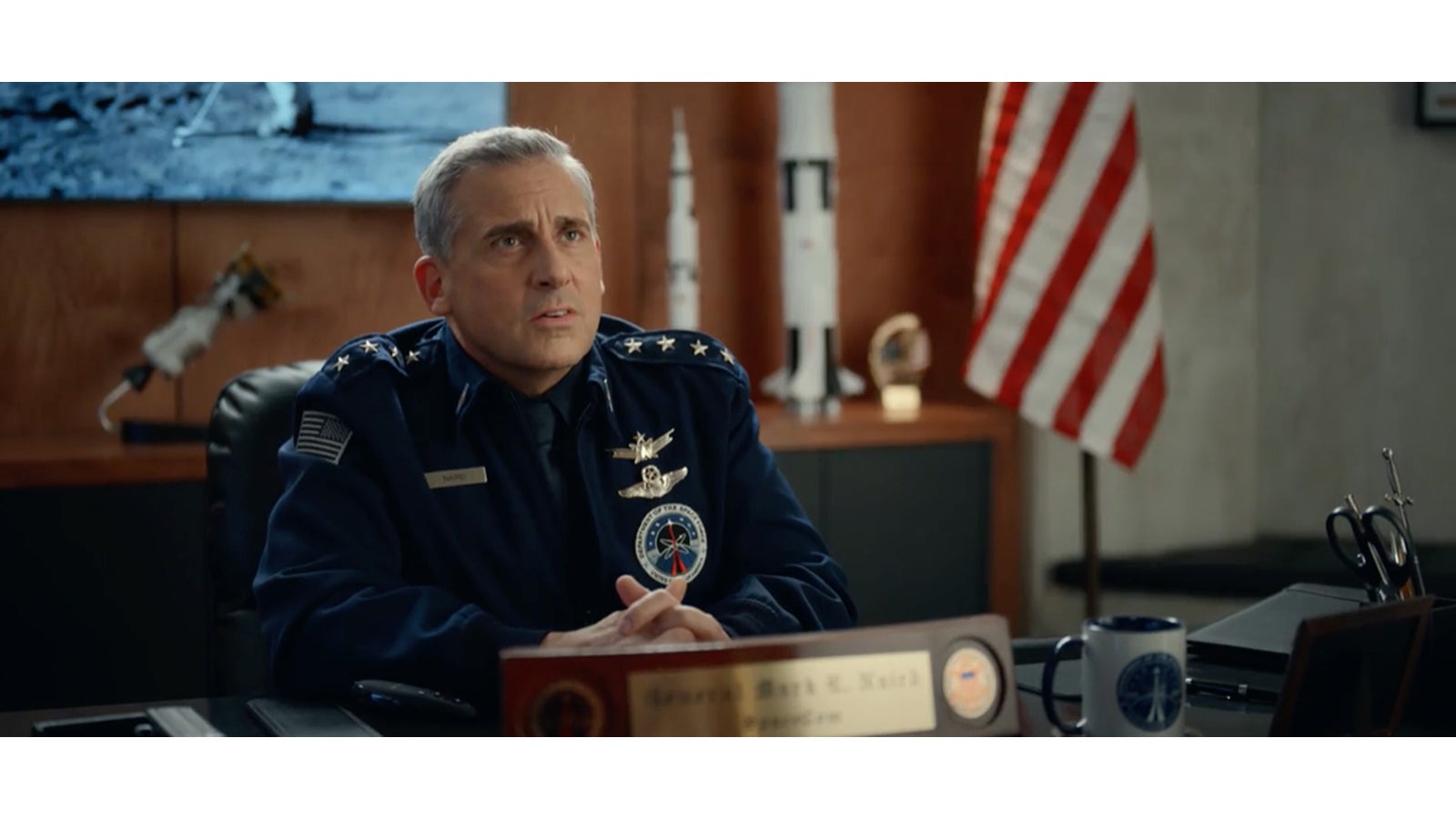
JB: What are your thoughts on the latitude of the files?
SC: I was blown away by how much we could push the image around. Space Force is not stretching the format at all, but from what I was seeing, we work in HDR, we do an HDR grade for Netflix, and I get very used to just looking at those images. I have an HDR 4K TV at home as well, which I can compare. And I was happy that we could push the color into the place where I wanted it to be. We pulled back on the reds and pushed slightly more cool into shadows. I was trying to create a smooth tonality and color-wise, it was fantastic.
I think, as DPs, the camera is giving us more options and we can approach projects knowing that we have that camera and that sensor, it's helping dictate decisions on locations, and lighting options, and capabilities for DIs and you're going into a job knowing what you can get away with based on the sensor. Having that technical advantage is making an impact on the decisions that we make early on in prep.
JB: How do you feel about how VENICE conveys skin tones and color?
SC: That's really important to me. Everything we do is about looking at actors' faces and the skin tones are super important. And from what I saw with VENICE, there were no issues. It didn't feel clampy, to use that word, with various skin tones.

JB: Clampy?
SC: I don't think it's an actual word. It's just a feeling I get sometimes when I look at things. I don't know whether it's the camera or whether it's the grade or whether they've pushed it in a certain direction, but when a skin tone starts to lock up and look a little, I call it clampy, it just feels a little forced or something. And it feels like it breaks apart a little bit and doesn't feel like a natural skin tone, where you're feeling like the detail level is not there.
With the VENICE and the skin tones, I never felt that. I always felt like it looked quite true to my eye and quite true to the skin tone of that person. And we pushed with our look a little more warmth into skin tones generally.
JB: Did you use any other filters besides ND?
SC: On closeups I'd occasionally use a 1/4 Glimmerglass or 1/2 Glimmerglass, but generally I work diffusion free.
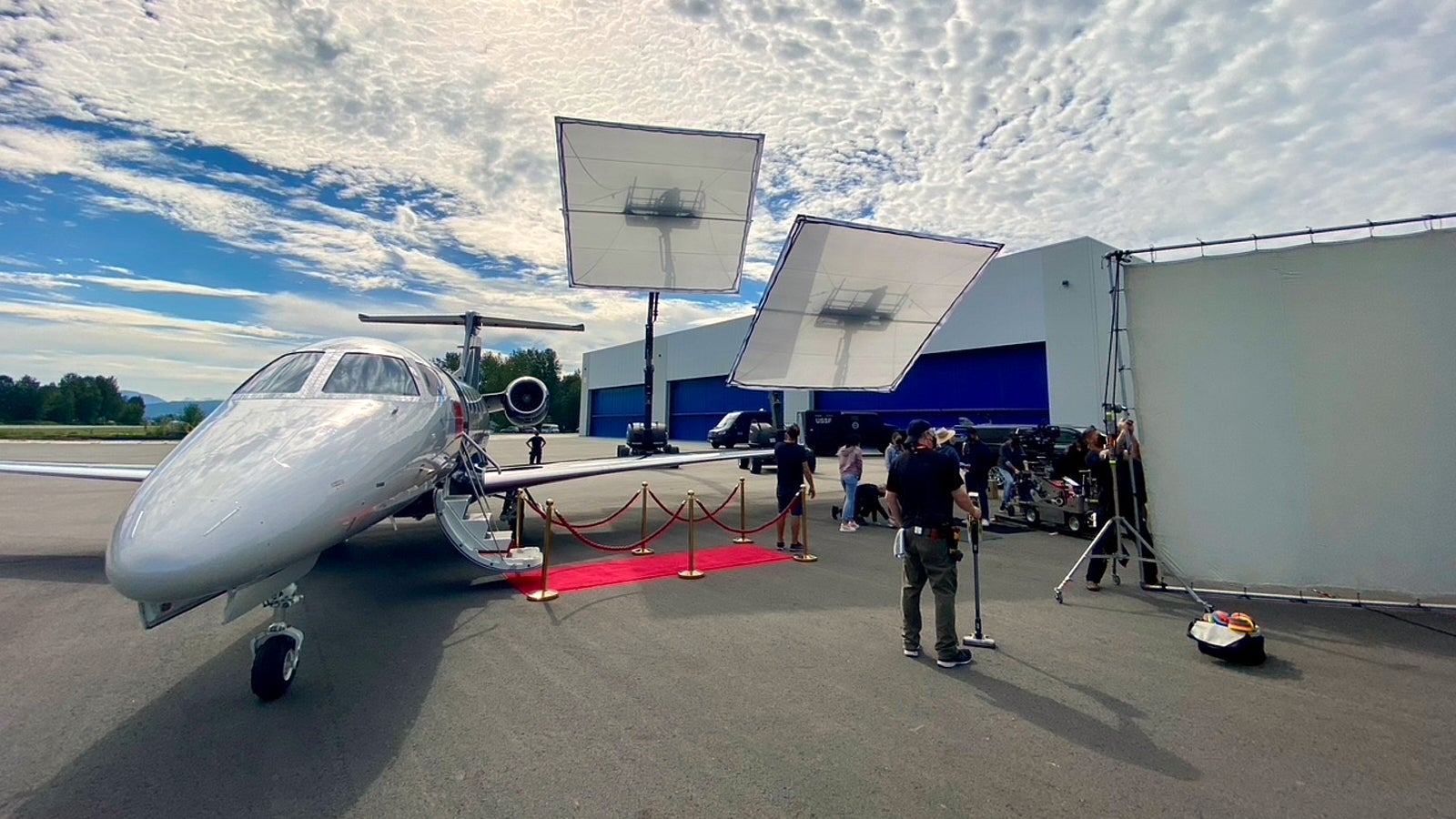
JB: Did you monitor HDR on set? What was your approach to HDR knowing that you were going to be doing an HDR pass later?
SC: We did not monitor in HDR. That still doesn't seem to be very common considering the cost of monitoring. I pretty much just worked with my regular workflow on set with the CDLs. And generally, for the darkest stuff, I would protect myself a bit like in the film days of having maybe two thirds of a stop more than I needed so that I can pull things down later.
Knowing what I know about the camera and the tests that I'd seen, I felt confident that I could expose and light and shoot the way I normally do. And then we would see an HDR image and an SDR image side by side in the DI, looking for anything that stood out to us on the SDR, like where we had to pull a highlight down or adjust something, but there really wasn't much of that needed. I felt pretty good that we were in the zone with the HDR and the SDR combined.
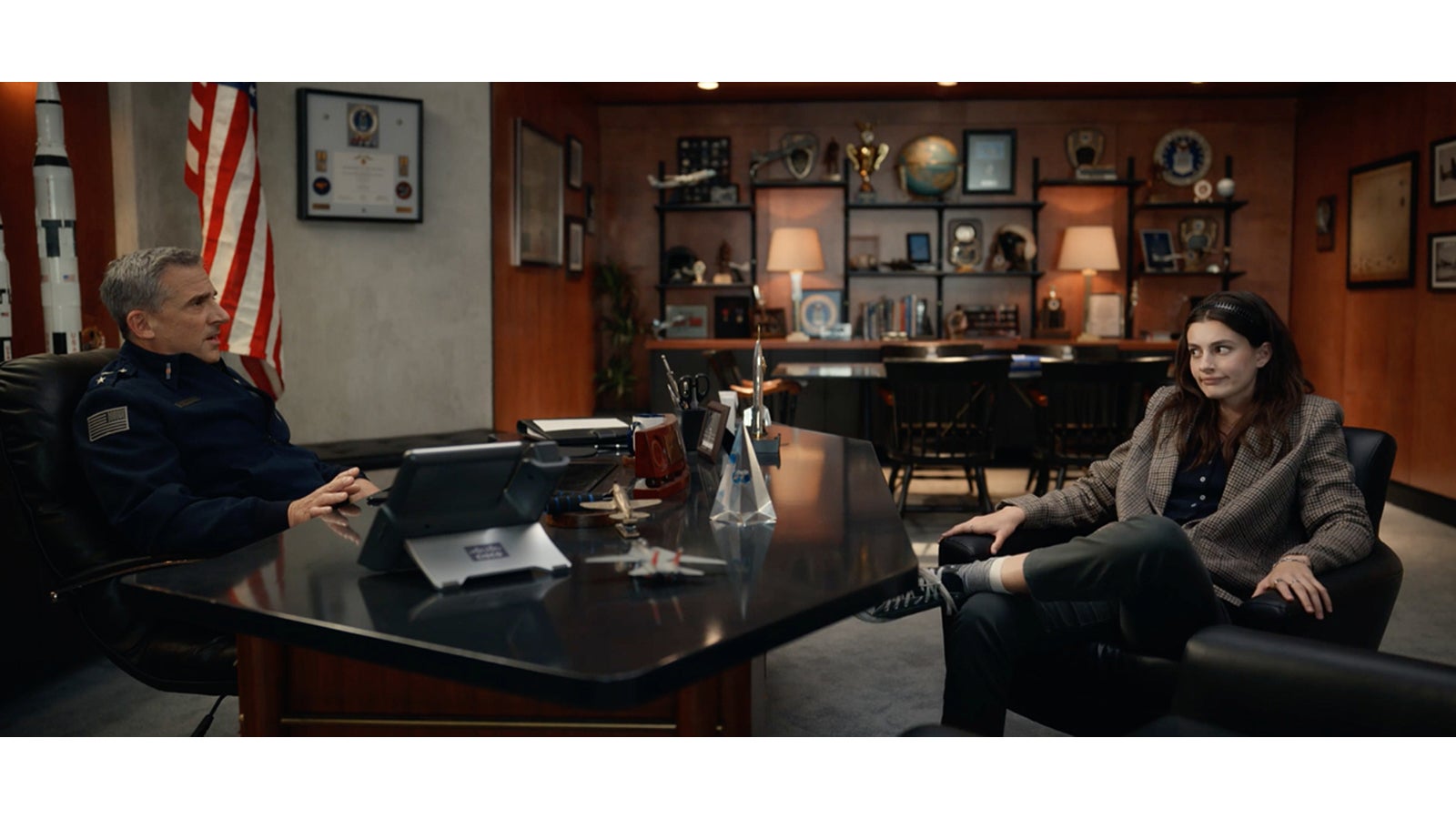
JB: Did Company 3 do the DI on this then?
SC: Yeah. Cody Baker at Company 3 in L.A. did the first episode and he set up the show LUT. We did the rest of the episodes up here at Company 3 in Vancouver. It was a really easy process. I think if you're shooting consistent images, it means the color process should be fairly straightforward.
It was a fast and furious shoot. And it was a wonderful experience this season. We had an amazing director, Ken Kwapis, who directed all seven episodes. And, the cast really loved it this year. It was much more about the ensemble and it was much simpler, but we had to shoot each episode in five days. So, there wasn't much time to think about it. We just got in there and just tried to give the actors the space they needed to do what they wanted to do. It was less about the camera and more about them having the space as actors to do the comedy and to have fun making the show, about the actors having the frame to play with.
Space Force is streaming now on Netflix.





